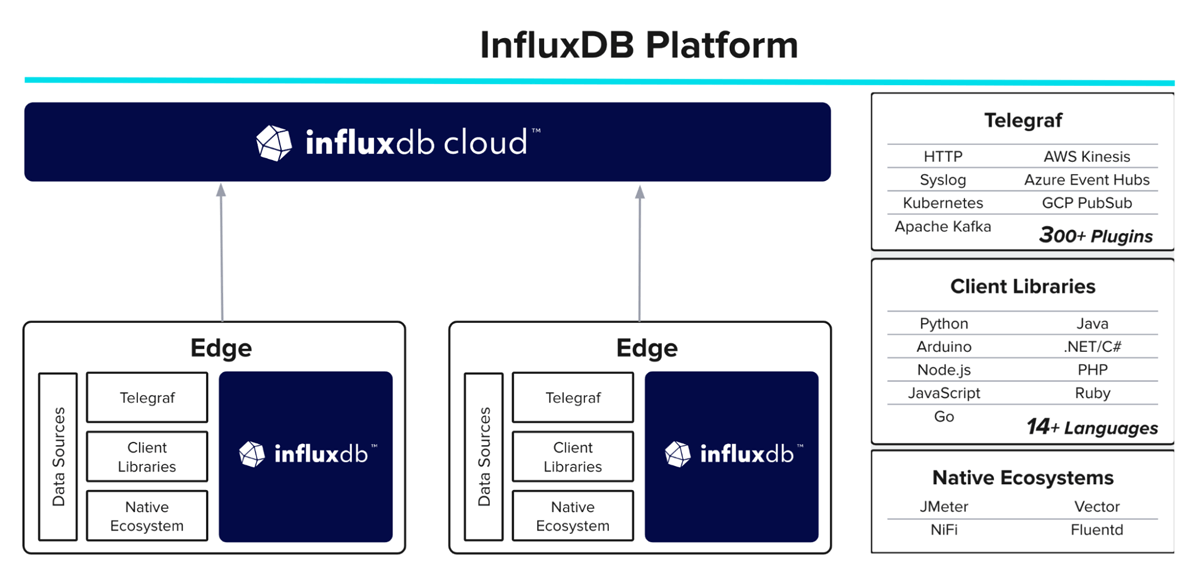Monthly Product Update – Edge Data Replication and Sample Apps for IoT & Node.js
By
Bharat Bhat /
Use Cases, Product, Developer, Company
Jun 30, 2022
Navigate to:
We love to write and ship code to help developers bring their ideas and projects to life. That’s why we’re constantly working on improving our product in sync with developer needs to ensure their happiness and accelerate time to awesome.
This is the second in a blog series covering our product’s latest features — features that we think will save you time and effort when building with time series and InfluxDB. We hope you love the new features — and bug fixes covered in this series’ second edition!
1- InfluxDB Edge Data Replication
Bring the precision of the edge to the power of the cloud
This month, we announced the immediate availability of Edge Data Replication, a solution that unifies time series data processing between edge and cloud environments so developers can provide consolidated intelligence across widely distributed environments. Edge Data Replication (EDR) makes it possible to safely replicate data from InfluxDB OSS buckets at the edge to InfluxDB Cloud buckets in real time. This means users can now collect, store, and analyze high-precision time series data from the edge, and view that data in the cloud.
Edge Data Replication for devs
Edge Data Replication gives developers a fast and durable way to stream edge data to the cloud, with minimal configuration. This capability gives users the data they need in the cloud to build a global view of all edge activity. With Edge Data Replication, developers can:
-
Integrate edge and cloud workloads: Enables developers to quickly engage in both edge and cloud computing for their time series workloads, without requiring additional third-party software.
-
Reduce network costs: Edge Data Replication helps developers intelligently reduce the volume of data they send to the cloud by leveraging built-in capabilities of the Flux tasks engine. Operators of OSS nodes at the periphery can pre-compute aggregations and filtering so they can limit the data sent over the internet to the most critical data. They may also use this feature to filter or compute interesting events and forward only those events to the cloud for monitoring.
-
Transform edge data: Dynamically add context to edge data that is necessary for processing in the cloud, which may require extra dimensions to satisfy queries or feature engineering.
-
Enforce edge-cloud consistency: Withstand planned and unplanned disruptions in network connectivity by queueing data at the edge until it can be safely transferred to the cloud.

Edge Data Replication demo
Check out this short demo to get started and to see how easy it is to set up and use InfluxDB Edge Data Replication.
2- Sample apps for Node.js and IoT
Node.js
The InfluxDB Node.js sample app helps you get up and running quickly using the Node.js client.


IoT
The IoT sample app is an example project that provides a Node.js server-side REST API that interacts with InfluxDB. It is an adaptation of the InfluxData IoT Center, simplified to accompany the InfluxData IoT Starter tutorial. The Project uses the Next.js framework and the InfluxDB API client library for JavaScript.

3- API token management
Easily bulk delete API tokens
Users can now select one or many API tokens to delete, in order to more efficiently manage their tokens.

4- Bug fixes
- Corrected import path for injecting nested Flux packages
- Login page redirection fixed for expired UI sessions
- Token re-labeling for better description and accuracy
- Fixed MacOS Help & Support menu issue
- Upgraded Clockface version
- Fixed rendering of table visualizations
- Ensured that nested objects no longer break tables
- Query Explorer fix for displaying results

